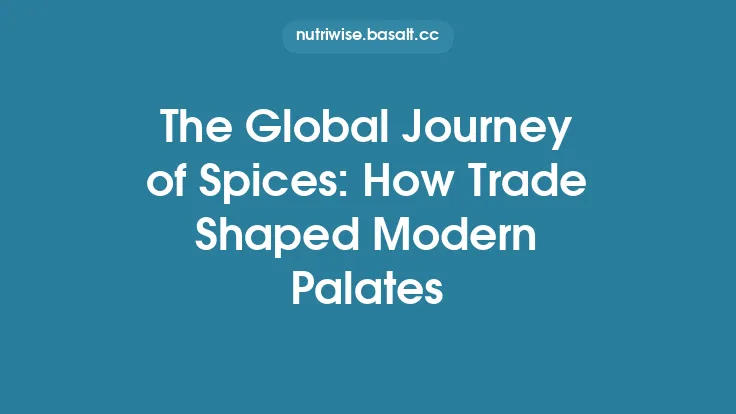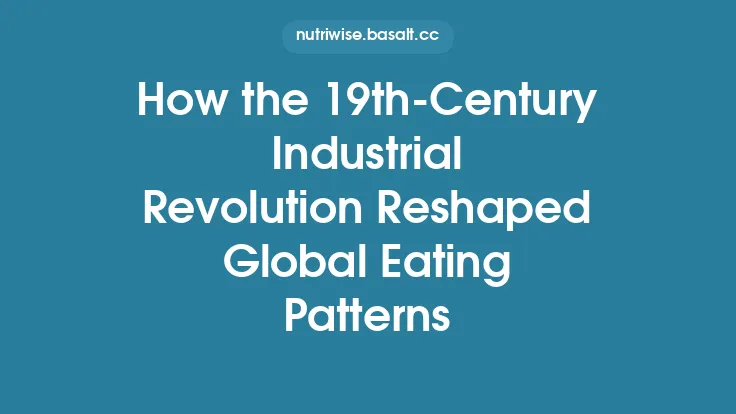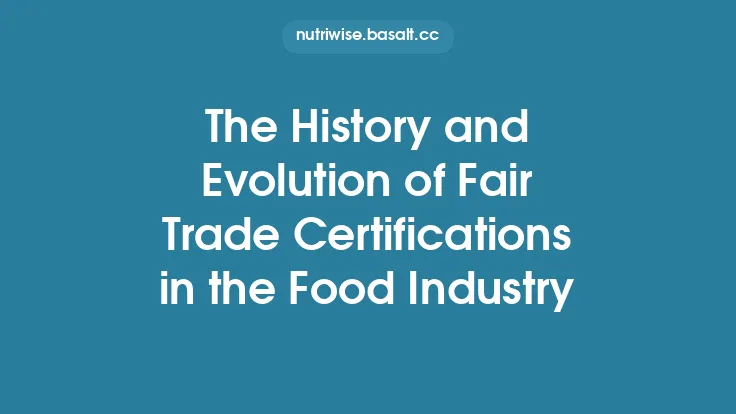The movement of people, goods, and ideas along ancient and modern trade routes has been a primary engine behind the ever‑changing tapestry of global food. Long before the age of airplanes and refrigerated containers, merchants, pilgrims, and explorers carried seeds, preserved foods, and culinary knowledge across deserts, mountains, and seas. These exchanges did more than satisfy hunger; they rewrote regional diets, introduced new agricultural practices, and forged cultural identities that persist to this day. By tracing the pathways of these exchanges, we can see how the world’s food landscape was continuously reshaped over millennia.
Early Overland Corridors and the First Food Exchanges
The earliest documented trade routes—such as the Fertile Crescent’s “King’s Highway” and the Bronze Age caravan tracks linking Mesopotamia with the Anatolian plateau—served as arteries for the movement of barley, wheat, legumes, and dried fruits. Nomadic groups exchanged animal products and preserved meats for cultivated grains, creating a reciprocal dependence that encouraged the spread of domesticated cereals beyond their original heartlands. Archaeobotanical evidence from sites along these corridors shows a gradual northward and eastward diffusion of emmer wheat and lentils, illustrating how even modest overland traffic could alter the staple composition of distant communities.
Maritime Networks of the Classical World
By the first millennium BCE, seafaring had opened new horizons for food exchange. The Phoenicians, for instance, established a network of ports across the Mediterranean, transporting olives, figs, and wine to distant markets while importing exotic items such as citrus fruits from the Levant. Similarly, Greek colonies in the Black Sea region imported grain from the fertile plains of the Pontic steppe, supplementing local production and stabilizing urban food supplies. These maritime links facilitated the rapid movement of perishable goods—thanks to techniques like brining and drying—allowing coastal societies to diversify their diets far beyond what local agriculture alone could provide.
The Silk Road: A Conduit for Culinary Diversity
Stretching from the Chinese heartland to the Mediterranean, the Silk Road was not merely a conduit for silk and precious metals; it was a living laboratory of food exchange. Chinese millet and rice traveled westward, while Central Asian barley and wheat moved east. The route also carried fermented products such as soy sauce and fermented dairy, introducing new flavor profiles to regions previously unfamiliar with such preparations. Moreover, the Silk Road facilitated the spread of culinary concepts—like the use of steaming and fermentation—through the exchange of written manuals and oral instruction among traveling merchants and court chefs.
Trans‑Saharan Caravans and the African Food Mosaic
Across the Sahara, camel caravans linked the Sahelian kingdoms with North African markets. Salt, a vital preservative, was exchanged for gold, ivory, and a variety of foodstuffs. In return, West African societies received millet, sorghum, and dried fish from the Mediterranean, while exporting groundnuts, kola nuts, and indigenous fruits northward. This bidirectional flow enriched the culinary repertoire of both regions: North African dishes began to incorporate groundnut pastes, while West African cooking incorporated dried fish and preserved olives, creating a hybrid food culture that persists in contemporary West African cuisine.
The Indian Ocean Trade: Grains, Fruits, and Culinary Syncretism
From the ports of the Swahili Coast to the harbors of Gujarat and the islands of Southeast Asia, the Indian Ocean served as a bustling highway for food commodities. Rice varieties from the Indian subcontinent were shipped to the Indonesian archipelago, where they merged with local tubers to form new staple dishes. Coconut, a tropical staple, traveled northward to the Arabian Peninsula, where it was incorporated into stews and sweets. Simultaneously, dried fruits such as dates and figs moved southward, enriching the diets of coastal African communities. The result was a mosaic of culinary practices that blended indigenous ingredients with imported staples, fostering regional cuisines that are still recognizable today.
The Columbian Exchange: A Global Food Revolution
The arrival of European powers in the Americas triggered the most dramatic food redistribution in human history. Crops native to the New World—maize, potatoes, tomatoes, cacao, and various beans—were introduced to Europe, Africa, and Asia via Atlantic shipping lanes. Conversely, Old World staples such as wheat, rice, and sugarcane were transplanted to the Americas. This bidirectional flow reshaped agricultural economies: maize became a cornerstone of African subsistence farming, while potatoes revolutionized European caloric intake, supporting population growth. The exchange also introduced new culinary techniques, such as the use of cornmeal in African porridges and the incorporation of tomatoes into Mediterranean sauces, fundamentally altering regional food identities.
Imperial Trade Empires and the Institutionalization of Food Commodities
During the age of empire, state-sponsored trade companies—such as the Dutch East India Company (VOC) and the British East India Company—systematized the movement of food commodities. These entities established plantation economies in tropical colonies, producing cash crops like tea, coffee, and rubber for export. While the primary focus of these enterprises was not food per se, the logistical networks they built facilitated the regular flow of staple foods and preserved goods to distant markets. The institutionalization of such trade routes ensured that previously regional foods could become globally available, laying the groundwork for modern commodity markets.
Technological Innovations in Transport and Their Nutritional Consequences
Advancements in transport technology—ranging from the development of the camel saddle to the invention of the steamship—directly impacted the nutritional profile of traded foods. The introduction of refrigerated cargo holds in the late 19th century allowed perishable items such as fresh meat and dairy to travel across continents without spoilage, expanding dietary options for urban populations. Similarly, the railway networks of the 19th and early 20th centuries reduced transit times for grain shipments, stabilizing food prices and reducing seasonal scarcity. These innovations not only increased the volume of food exchanged but also diversified the nutritional composition of regional diets.
Cultural Hybridization: Emergence of Fusion Cuisines
When food items travel, they rarely remain in their original culinary context. The intermingling of ingredients, cooking practices, and taste preferences gave rise to hybrid cuisines that embody the legacy of trade routes. For example, the incorporation of Indian spices and cooking techniques into Southeast Asian dishes produced the distinctive flavor profiles of Malaysian and Indonesian cuisine. In the Caribbean, African cooking methods combined with European ingredients and indigenous produce to create dishes such as callaloo and jerk seasoning. These fusion cuisines illustrate how trade routes acted as cultural bridges, allowing culinary traditions to evolve through continuous interaction.
Food Security and Resilience in the Context of Trade Networks
Trade routes have historically acted as buffers against localized crop failures. When a region experienced drought or pest infestation, imported staples could mitigate famine risk. The medieval Mediterranean, for instance, relied on grain imports from the Black Sea during periods of poor harvests in Italy and Greece. However, dependence on external supplies also introduced vulnerabilities: blockades, piracy, or political upheaval could disrupt food flows, leading to shortages. Understanding this dual nature of trade—both as a source of resilience and a potential point of fragility—offers valuable lessons for contemporary food security planning.
Contemporary Globalization: Echoes of Ancient Trade Routes
Modern globalization mirrors many patterns of ancient trade, albeit at a vastly accelerated pace. Container shipping, air freight, and digital marketplaces enable the daily movement of billions of kilograms of food across the globe. Yet the underlying dynamics remain similar: producers in one region respond to demand in another, and cultural preferences continue to shape import patterns. The popularity of sushi in Europe, the spread of quinoa from the Andes to North America, and the global demand for avocados illustrate how historic pathways of exchange still influence today’s food choices.
Future Trajectories: Sustainable Food Networks and Lessons from History
Looking ahead, the challenge lies in designing trade networks that balance global accessibility with ecological sustainability. Historical trade routes demonstrate that diversified, resilient food systems arise from a mosaic of local production and strategic exchange. By fostering regional hubs that prioritize low‑carbon transport, reducing reliance on long‑haul shipments for perishable goods, and encouraging the cultivation of climate‑adapted crops, modern societies can emulate the adaptive strengths of past trade networks while mitigating environmental impact. The centuries‑long story of how trade routes shaped the world’s food landscape thus offers a blueprint for building a more equitable and sustainable food future.





